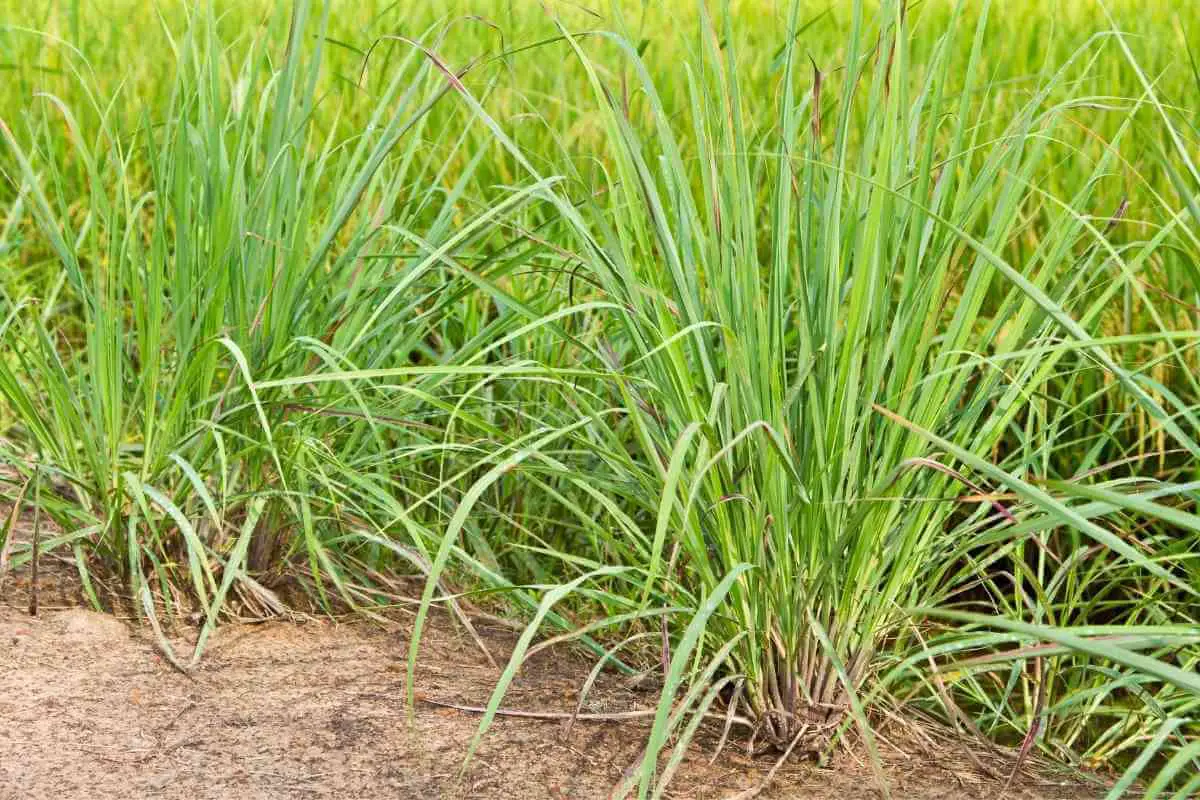Believed to originate in Asia, Australia, Africa, and some tropical islands – this herbal and medicinal plant, is revered by many for its vast multitude of extremely beneficial uses.
From deterring arachnids and insects, to cleansing your urinary tract, this fragrant and edible grass can be used to produce tea; can be used as an herbal remedy and makes a fantastic addition to any kitchen or garden.
- Latinate Title: Cymbopogon
- Family: Poaceae
- Common Pseudonyms: Citronella Grass, Ginger Grass, Fever Grass, Barbed Wire Grass…
- Lifespan: 4 Years
- Height: Up to 6 feet tall (1.8m)
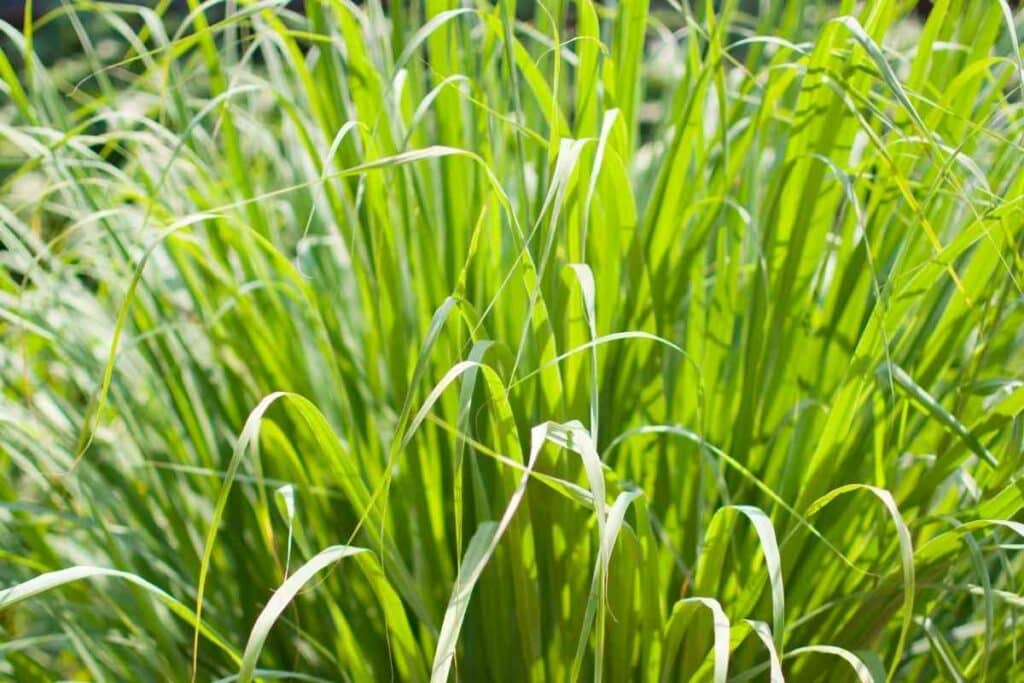
Just piercing a leaf will release a citrusy scent. An all-year-round plant, Lemon Grass can even be used to flavour Rice dishes.
A flowering plant in tropical climates, this ubiquitous plant produces leafage of tall, green blades which are aptly named, and which hang outward, forming a spikey spherical structure.
In perfect conditions, it produces what is referred to as a compound and unelaborate flower.
Sadly, however, it is very unlikely that you will see it flower in the cooler, more northern environments.
Here, we will present information on this self-replicating plant’s growth, its various uses and general maintenance.
How Many Varieties of Lemon Grass Are There?
This regenerative, perineal plant exists in a variety of around fifty different species.
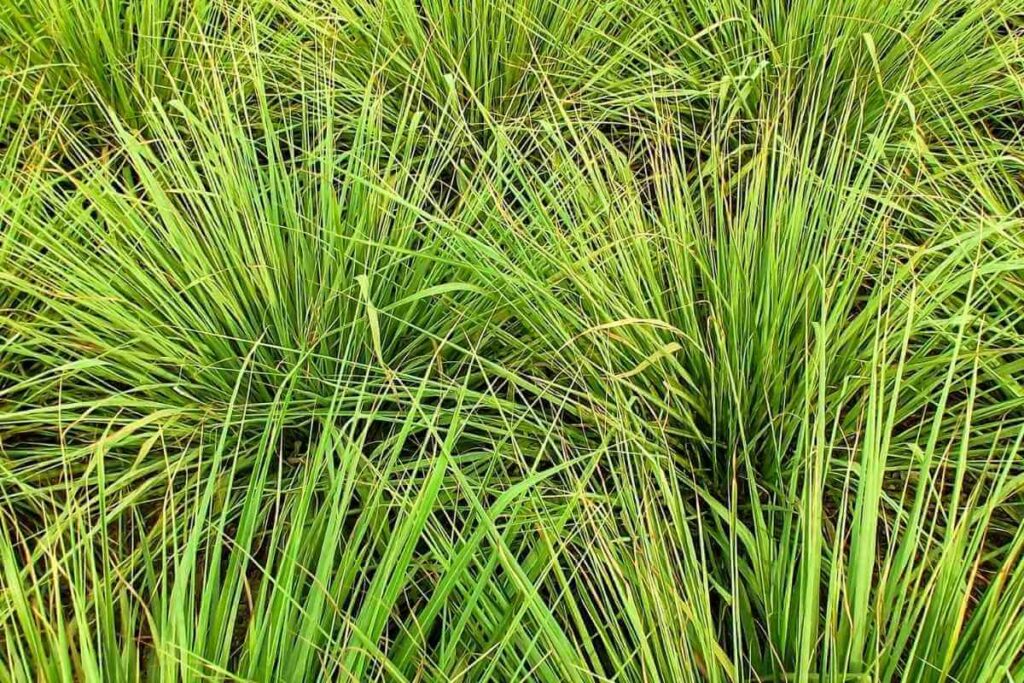
The most commonly cultivated is the most ‘Ornamental’ West Indian Lemon Grass (Cymbopogon citratus) which produces a slightly turquoise-colored leaf, but varieties are also found in East India (Cymbopogon Flexuosus); Java (Cymbopogon winterianus), and other places throughout the world.
The Citronella variation is considered the most pungent and Citronella oil is used most frequently as a repellent.
East Indian Lemon Grass is known to contain a hint of ginger flavoring and is a unique aesthetic, due to its proud purple seed heads and is often used in hedges and borders to add some color.
It is also worth noting that many gardeners situate Lemon Grass close to Lavendar, which is very compatible.
How Does Lemon Grass Grow?
Taking roughly one hundred days to grow fully, Lemon Grass needs plenty of sunlight and warmth to thrive, along with plenty of water.
Although, there is much research that suggests that it can grow quite well in shaded areas, as well as patchy sunshine.
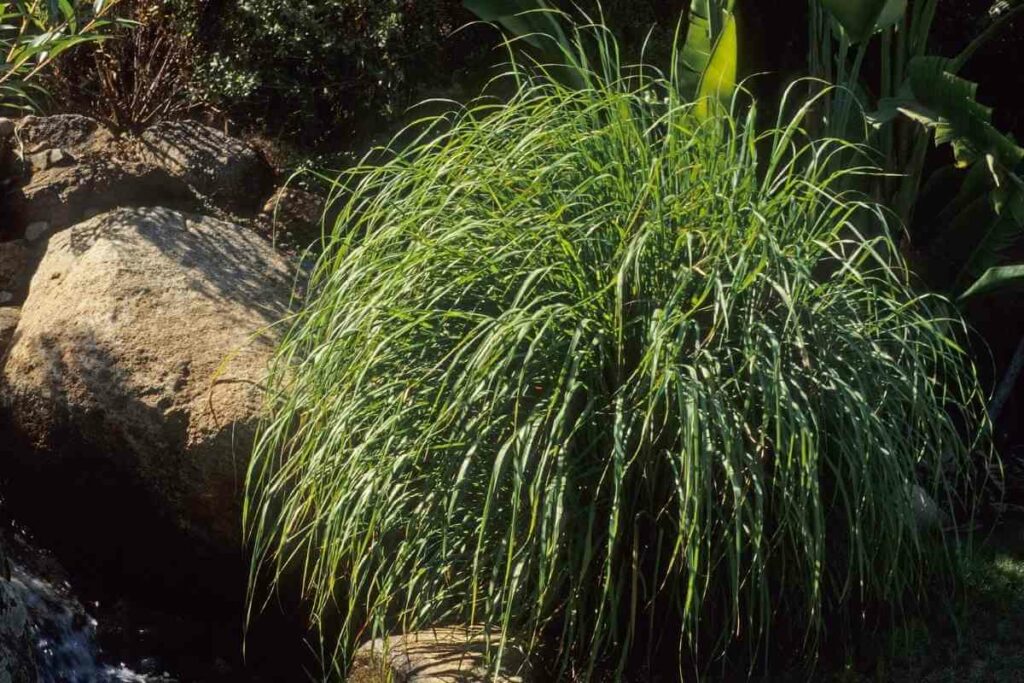
This is, of course, only applicable in warmer climates because this topically inclined plant does not do well in Winter and needs protection from Frost.
Many gardeners will grow it in medium to large containers outside, so that they can bring the plant indoors during the colder months.
It is, however, possible to grow this plant outdoors in mild Winters when temperatures are slightly higher and stable enough to sustain growth.
They also need high levels of hydration and require soil which is course enough to drain well.
As with the majority of plants, flooding is not an option with Lemon Grass, but it is apparently not too picky about soil type.
Loam holds more moisture but even adding in some compost or moss to the soil, can suffice.
There is also a well-established recommendation for the use of nitrogen-rich fertilizer, during the growth of the plant – much like with a lawn.
Irrigation
This illustrious plant will need to be watered generously, every other day.
Sun-loving, this plant also benefits from adding a layer of organic mulch or bark to the top of the soil.
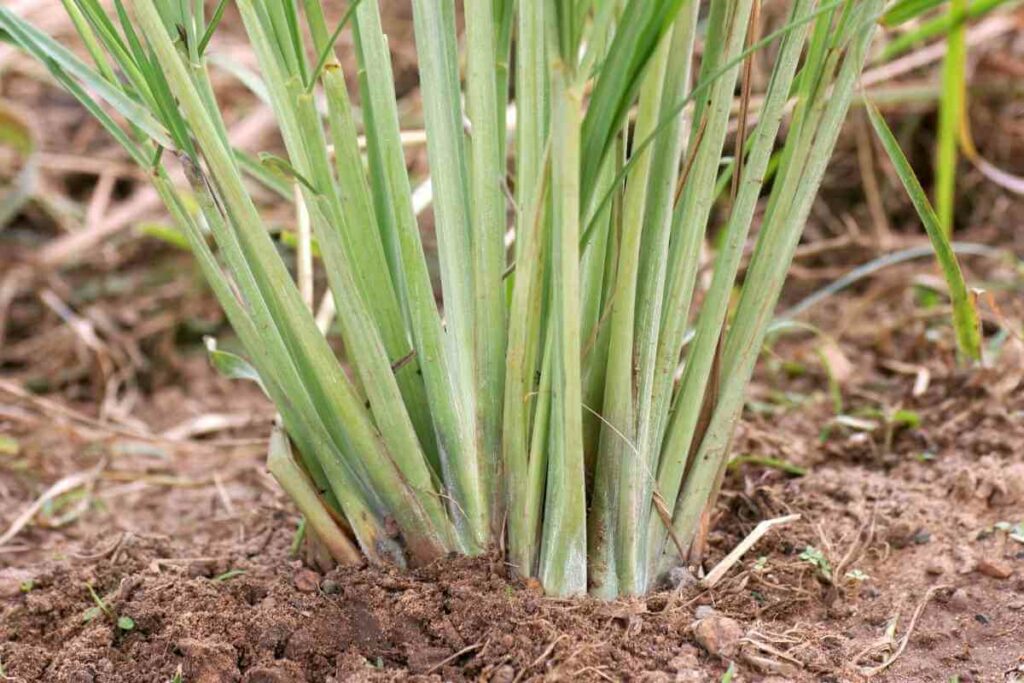
Like many tropical plants, it thrives in regular rainfall and a muggy atmosphere; so, this helps to mimic the plant’s most desirable habitat, but it will, however, struggle in boggy soil.
Try not to over or under water; balance is key. Even the surface of the leaves, are best left to dry between irrigations or rainfalls.
Propagation
Similar to other tropical plants, like the Polka Dot Plant, Lemon Grass is incredibly easy to propagate.
They produce so many new stalks called ‘rhizomes’ (without human intervention) that some recommend sharing them with other gardeners so that they don’t go to waste.
Each plant will literally propagate itself!
New stalks grow naturally which makes manual propagation simple:
- Just grip the plant and carefully pull away newly grown stalks, placing them in a couple of inches of water.
- Change the water every few days to freshen it up and you will soon start to see new roots forming but this can take up to three weeks.
- When they reach around an inch in length, they are ready to be transplanted into nutrient-rich, well-drainable soil.
Should you obtain soil that is appearing too dense for good drainage, apply a small amount of course sand, or other potting medium, to improve the flow of water.
A Plant with Four Lives
Over the course of its four-year lifecycle, Lemon Grass regenerates with the right conditions or with some human intervention.
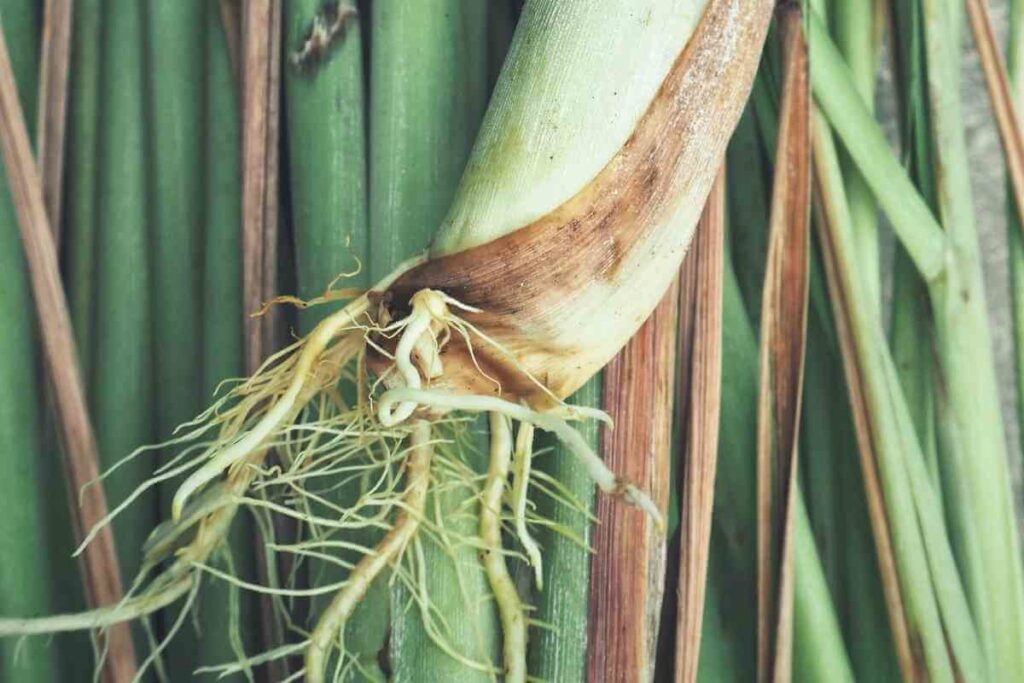
Although they appear to diminish quite rapidly in colder weather or drought, keeping the roots covered with a Frost blanket, throughout the winter months – or using an organic ground covering like straw or bark – will protect the plants enough to see them spring back as the temperature increases and the soil is hydrated.
Even if the plant looks likely to be in serious trouble, it will still often emerge if the roots have been protected sufficiently.
Your Choice: Some gardeners even dig up the plant and store it until Winter has passed, only to replant it in Spring.
Natural Reproductive Ability
Once fully established, this plant will multiply and spread itself by producing multiple new stalks, independently.
You should divide them annually, in Spring, otherwise they will spread like wildfire.
Should you use a small pot to grow even a single plant, then the roots will expand, and the stalks will multiply to the point when it outgrows the pot and breaks it.
Some sources state that placing plants around thirty-five inches apart is sufficient to allow space but on the other hand, some go as far as saying sixty inches.
Growing from seed, each will take just a few days to germinate in moisture and warmth and should be planted at least fourteen inches apart.
Like many other grasses, Lemon Grass will develop a dense rootage, and placing them too close together will create a habitat which is far too competitive.
Plants will struggle to both feed and grow, as a result. This is all without the natural ability to multiply. Space, for this large and multiplying plant, is vital.
Can Lemon Grass Be Used for Medicinal Use?
There is a vast plethora of medicinal uses for Lemon Grass.
It is, like Coffee, a natural diuretic but unlike Coffee or Tea it contains zero caffeine.
In fact, a small study demonstrated that drinking Lemon Grass tea produces more of an effect than any other diuretic.

It can relieve water retention, maintain a healthy urinary tract, and even has a calming effect which makes this plant’s tea a great bedtime drink.
Or simply something to help to calm your nerves in stressful situations.
Reported medicinal uses include reducing the symptoms of:
- Wounds
- Fever
- Hypertension
- Diabetes
- Rheumatism
- Digestive Issues
- Aches
- Pains
- Swelling
- High blood pressure
- Depression
- Anxiety
- Stress
Used widely in Aromatherapy, Lemon Grass holds essential oil, antioxidants, antimicrobials and can also reduce yeast levels and even prevent and kill bacteria.
It is even used for hygiene and cleaning products.
This list is by no means exclusive and doing just a simple Internet search will provide much more information about the incredible versatility that this plant has, particularly in the kitchen.
In the Pantry
Not just for making a citrus-infused tea with a fabulously lemony flavour and aroma; as well as infused water, Lemon Grass is also exploited widely as a herb and a spice.
The stalk, and the white core of the plant can both be used in cooking. The stalk – in Asian and Indian dishes and can be exploited in many foods, including: broths and soups; rice dishes for flavour, and can also be applied to making drinks.
The inner core of the plant can be cooked and ingested like any other vegetable.
Although it is mostly safe for pets, it can be dangerous – particularly for dogs – if a large quantity is ingested. This may cause an upset stomach, leading to vomiting and/or diarrhoea.
Should this happen, please consult your veterinary practitioner immediately!
Remember This: It is recommended that you should take caution when working with this plant; the blades can be rather sharp. Their blade-like leaves are even known to deter tigers in parts of India.
How to Harvest Lemon Grass
At half an inch thick, Lemon Grass is just about ready for harvest.
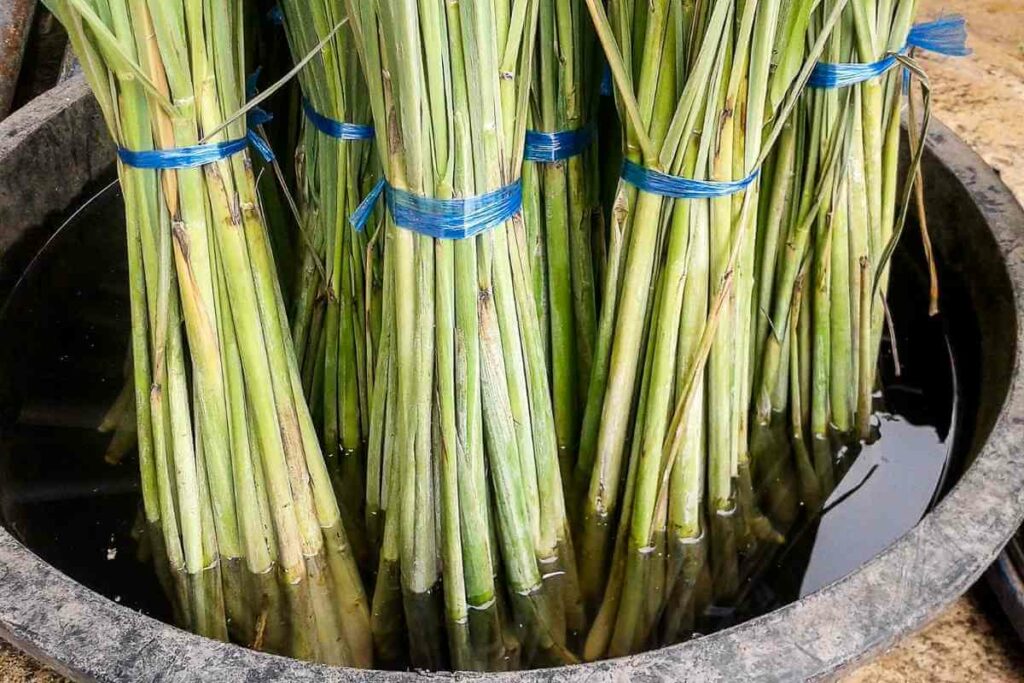
Make an incision that is level with the soil. Otherwise, you can manually pull down the leaf, twist it at the base and then snap it away with your hands.
It is recommended to take caution even wear some protective gardening gloves to protect your hands from the sharp blades.
Can You Use Lemon Grass as a Pesticide?
Lemon Grass contains an essential oil known as, surprise surprise: lemongrass oil.
This is what spiders are wary of and even other predatory insects like wasps, bees, and mosquitoes – making it an excellent insect repellent.
However, the plant is also used in its earlier growth stages, to attract scout bees which can help beekeepers collect bees, by trapping the scouts and the bees then follow.
Otherwise, many insects and most arachnids steer clear. If you are arachnophobic then this might be the house plant for you!
Signs of Distress
There are some quite obvious signs to look out for, which indicate that your ‘Barbed Wire Grass’ is losing its edge.
Should the leaves become droopy and a bit sad, it loses some colour or even starts to dry out, then change watering frequency accordingly:
- If it is dry, then check the soil by digging down an inch with your finger to ensure it is moist. If dry, then this is likely the cause and the plant will require more water.
- If too wet, then reduce the amount of water that you provide on the alternate day routine. Likewise, a lack of sunshine exposure or fluctuation in temperatures can affect it.
- If the temperature is too low and the plant is unprotected, it will likely meet its end. If the temperature even drops below 40 degrees Fahrenheit (4 degrees Celsius), it will present symptoms of deterioration.
Rusting Blades
Not all signs of distress are easy to tackle, unfortunately.
Lemon Grass suffers from a common disease widely known as ‘Rust’.
It affects the blades, causing them to develop randomly-shaped lesions which are almost rusty in colour – hence the name – and similar to the spots on a cheetah.
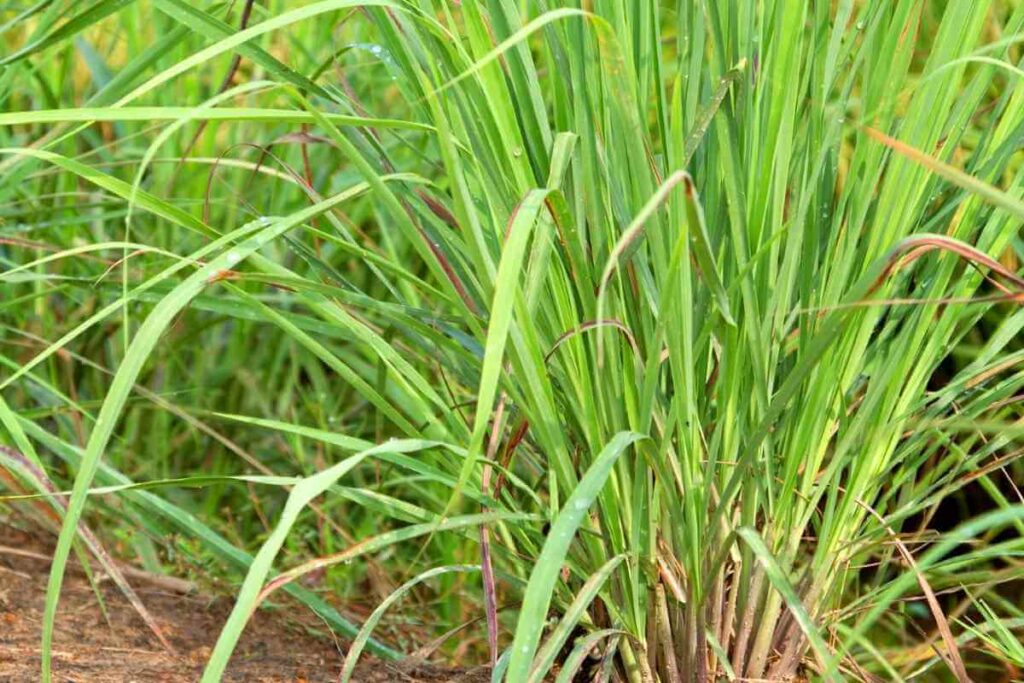
Catalysed by a fungal pathogen (Puccinia nakanishikii Dietel), dying leaves look like a conglomeration of rusty blades.
Dying leaves will release spores which infect other plants, making this disease incredibly transmissible.
Like the grass itself, it can spread rapidly and devastate an entire crop.
Fungus, generally, also thrives in similar conditions as the plant but the warmer and more humid it is, the more of a risk it becomes.
Reported as early as 1904, it has now been documented to be present in many parts of the globe and there is unfortunately very little to be done.
A number of tropical plants suffer at the hands of fungal infectious diseases and the general consensus is that the plant is done for.
Although there are some suggested biological controls, sterilising by disposing of the infected plants and the contaminated soil, is the best method of dealing with it.
Pesky Pests
Ironically, Lemon Grass can also suffer at the legs of Spider Mites.
In larger numbers, these little Tetranychidae will diminish the health of, or even kill the plant by parasitically draining it.
Of the various species known, some even overwinter with the plant! So, keep your eyes peeled if you store them in dormancy.
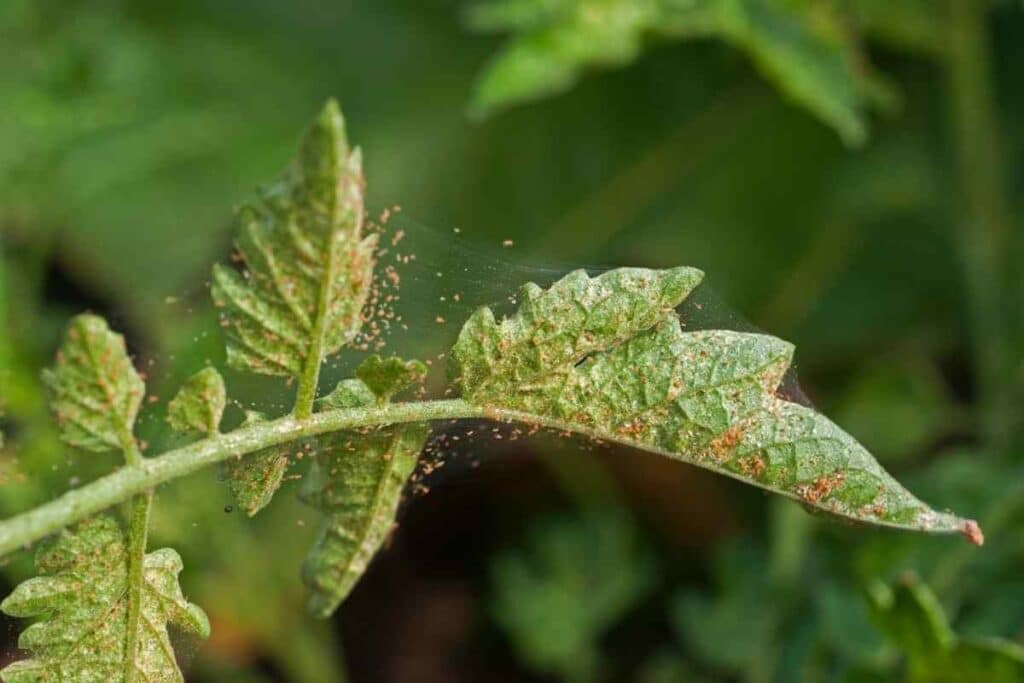
Humanely, you can wash the plant with a jet hose if you have an infestation.
Like with aphids, which affect many plants, you can situate plenty of flowering plants in the surrounding area, which produce nectar – attracting predatory beneficials, like wasps and bees to control the population.
It is even an option to purchase predatory insects for this specific purpose, these days.
As a Last Resort: There is always the use of pesticides, but these will also then counteract any other more humane efforts by simultaneously killing everything predatory. A recommended treatment is the use of insecticidal soaps to clean them from the plant; again, less humane.
Final Words
Lemon grass is very popular especially in Asian countries and has many uses from decorative to medicinal.
Once fully established, this plant will multiply and spread itself by producing multiple new stalks, independently which makes it a great garden plant to grow. Even for beginners!
You’ll just need the right climate to grow it successfully. If you have these conditions then I would suggest giving it a go.
